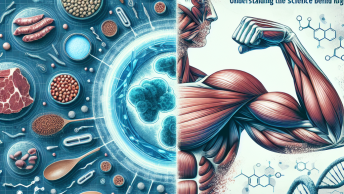When it comes to fat loss, the debate between cardio and strength training is a hot topic. Both forms of exercise have their place in a balanced fitness regimen, but which is more effective for shedding those extra pounds? Here, we dive deep into the benefits and drawbacks of each, so you can make an informed decision about what’s best for your fitness journey.
1. Understanding Cardio Training
Cardiovascular exercise, or cardio, is any rhythmic activity that raises your heart rate. It’s an excellent way to burn calories and improve cardiovascular health.
Benefits of Cardio:
- Calorie Burn: Cardio is a great way to burn calories quickly. Activities such as running, cycling, or swimming can torch a significant amount of calories in a short time.
- Heart Health: Regular cardio strengthens the heart and lungs, reducing the risk of heart disease.
- Endurance Boost: Over time, cardio improves stamina and endurance, making daily activities easier.
Drawbacks of Cardio:
- Muscle Loss Risk: Excessive cardio without strength training can lead to muscle loss, which can decrease your metabolic rate.
- Plateau Effect: The body can adapt to cardio workouts, potentially leading to plateaus in fat loss over time.
2. Delving into Strength Training
Strength training involves using resistance to build muscle mass. This can include lifting weights, using resistance bands, or even body-weight exercises like push-ups and squats.
Benefits of Strength Training:
- Muscle Building: Increases muscle mass, which boosts metabolism and helps burn more calories at rest.
- Long-Term Results: Muscle burns more calories than fat, so increasing muscle mass can aid in long-term fat loss.
- Body Composition Improvement: Strength training can enhance your body’s shape and appearance by toning muscles.
Drawbacks of Strength Training:
- Calorie Burn: Strength training typically burns fewer calories per session than cardio.
- Injury Risk: Incorrect form or overloading can lead to injury, so proper technique and guidance are crucial.
3. Combining Cardio and Strength for Optimal Fat Loss
While the cardio vs. strength debate continues, the most effective fat loss strategy may be combining both. Here’s why:
The Synergistic Effect:
- Burn and Build: Cardio burns calories and improves cardiovascular health, while strength training builds muscle and boosts metabolism.
- Variety: Mixing both types of exercise prevents boredom and maintains motivation by offering a varied workout routine.
- Adaptability: A balanced approach allows you to adjust the focus based on your progress and specific goals.
The Best Practices:
- High-Intensity Interval Training (HIIT): Combines cardio and strength elements into a single workout, maximizing fat burning and muscle building.
- Circuit Training: Involves performing a series of exercises with minimal rest, integrating both cardio and resistance training elements.
4. Personalized Approach to Fat Loss
Understanding your individual needs and goals is key to choosing the right balance between cardio and strength training.
Considerations:
- Starting Point: Beginners might benefit from more cardio to build endurance, gradually incorporating strength training.
- Goals: If the primary goal is muscle definition, emphasize strength training. For overall weight loss, a balance of both is beneficial.
- Lifestyle: Consider the time you can realistically commit and craft a plan that aligns with it.
For an impactful program tailored to your needs, personalized guidance can be invaluable. Click Here to learn more about designing an effective workout plan that suits your lifestyle and goals.
5. Nutritional Support for Fat Loss
Exercise alone isn’t enough for effective fat loss. Nutrition plays a critical role.
Keys to Success:
- Caloric Deficit: To lose fat, consume fewer calories than you burn, while ensuring you meet your body’s nutrient needs.
- Protein Intake: Supports muscle maintenance and can aid in recovery between workouts.
- Balanced Diet: Incorporate a variety of foods to meet nutritional needs and maintain energy levels.
6. Monitoring Your Progress
Tracking your journey can help you stay motivated and make necessary adjustments.
Tools and Tips:
- Regular Weigh-Ins: Track weight changes but remember that muscle gain can offset fat loss, meaning the scale isn’t the only measure of success.
- Body Measurements: Monitor inches lost, particularly around areas where fat loss is desired.
- Strength Gains: Note improvements in strength and endurance in your workout log.
7. Expert Advice
Consult professionals, such as fitness trainers or dietitians, to fine-tune your approach and overcome any plateaus. Their expertise can be invaluable in optimizing your workout plan and dietary habits for maximum fat loss.
While both cardio and strength training have their own unique benefits and setbacks, integrating them effectively into your routine is critical for lasting fat loss. By understanding the synergy between burning calories and building muscle, and supplementing it with proper nutrition and expert guidance, you’ll be well on your way to achieving your goals.
Remember, consistency is key. Keep pushing, stay motivated, and enjoy the journey towards a healthier, fitter you!






